This post contains affiliate links. We may get paid an affiliate commission if you buy something or take an action after clicking one of the links on this web page.
Last Updated: September 17, 2019
Maxpedition is a company best known for their military inspired backpacks. They offer a wide range of fabric goods, including packs, pouches, slings, and related accessories. This is a niche brand that has developed a loyal following over the years in the outdoor recreation and daily carry communities.
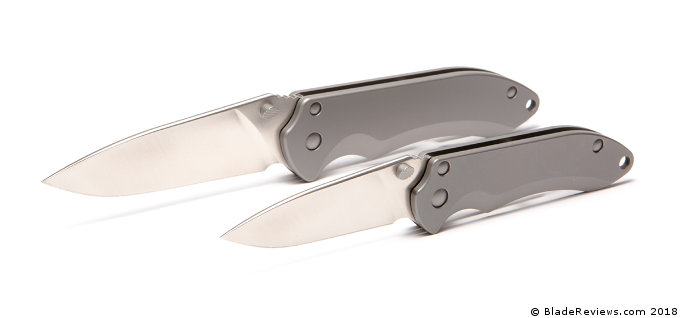
Buy the Maxpedition Excelsa at BladeHQ
So it was a little surprising to hear in 2013 that Maxpedition was going to start selling knives. On some levels it makes sense, as knives definitely compliment outdoor and “tactical” backpacks, but on the other hand they are completely different products. I’d say it’s akin to Apple deciding to sell office furniture.

At any rate, the Maxpedition Excelsa is the second knife from the Maxpedition, the first being the Ferox. The design closely resembles their previous offering, but sees a significant upgrade in materials and construction.
While considerably more expensive, the Excelsa is still aggressively competitive for a titanium frame-lock. Coming in below $130, it has features found on knives over double the price, including an over-travel stop and tool-steel blade.
General Dimensions and Blade Details
The Excelsa comes in two sizes. The small version is 6.7” in total length with a 2.9” blade and weighing 2.9 oz while the large version is 8.3” in with a 3.6” blade and weight of 5.1 oz. Both sizes are good for Every Day Carry (EDC) depending on your needs and preferences in an EDC knife. The knives are made in Taiwan.
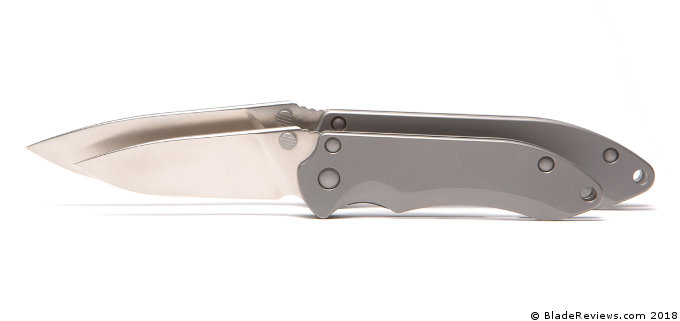
The pattern is a straight forward drop point. This is commonly used on sport and utility knives for its well rounded performance in both slicing and penetrating cuts. It is also easy to maintain with a bellied profile which lacks any kind of re-curve or otherwise unusual geometry. A full flat grind with a secondary bevel produces a keen working edge. A choil will make sharpening to the end of the edge possible. The spine is capped adding nice detailing and there is a jimped thumb ramp for added control.
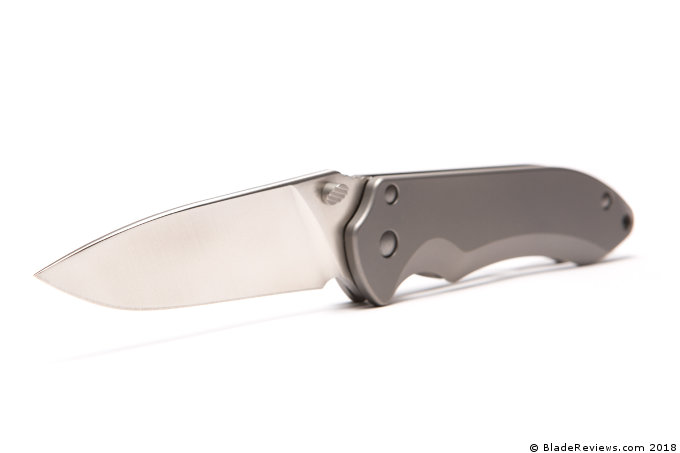
The blade steel used is D2. In this case it has been hardened between 58-60 Rockwell.
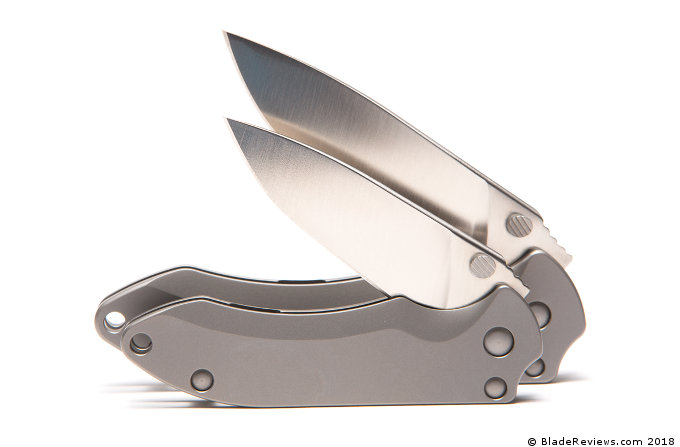
Unusually, there are no markings on the blade denoting the materials or manufacturer. While I like this clean aesthetic, it would be helpful to have the steel type embossed on the ricasso to let the user know how to care for the blade. This is especially true since D2 is a semi-stainless tool steel that will require some maintenance to keep it free of corrosion. If you were the second owner of the knife and didn’t have or read the documentation, then you might be surprised to see the blade behave differently from a true stainless steel folder.
Handle, Ergonomics, and Pocket Clip
The handle of the Excelsa has a simple two slab open build with a minimal amount of fasteners: three including the pivot. The inner edge has a first finger groove and another convex sweep that helps to lock the hand in place. The back edge is primarily straight with a slight turn down at the pommel that nests in the hand or serves as a thumb rest in a reverse grip. The titanium and hardware have been given a matching matte, bead blast finish.
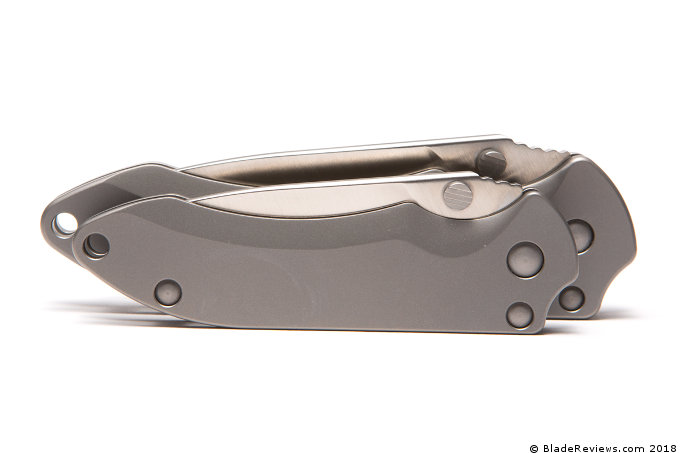
The ergonomics are simple but comfortable. This relatively handle design will accommodate most people. You won’t be surprised to hear that the large version is larger and more comfortable for big hands. There is wide toothy jimping on the spine of the blade that captures the thumb without irritating it.
For carry there is a lanyard hole and right handed, tip up or down deep carry pocket clip. When you consider that there is only a single thumb-stud and frame-lock, this adds up to the knife being for right handed people only.
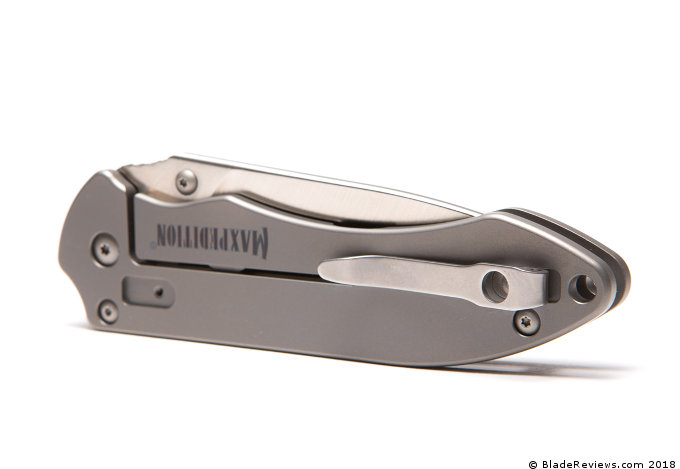
At under 3 ounces, the smaller version of this knife is imminently pocketable. It carries easily and something you will quickly forget thanks to it’s light weight, and the strong spring retention in the pocket clip. The large version is more noticeable in the pocket, but still carries well for what it is thanks to the discreet deep carry clip and thin design.
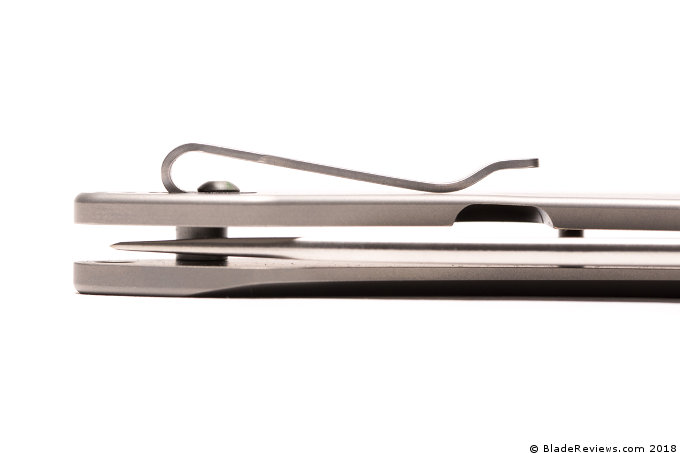
Deployment and Lockup
For deployment there is a tiered thumb-stud with an angled face. Set a good distance away from the scale’s inner edge, producing the blade is easy with one hand. This is helped along by good tolerances and phosphor bronze washers. These thumb studs remind me of those found on the Kershaw Blur.
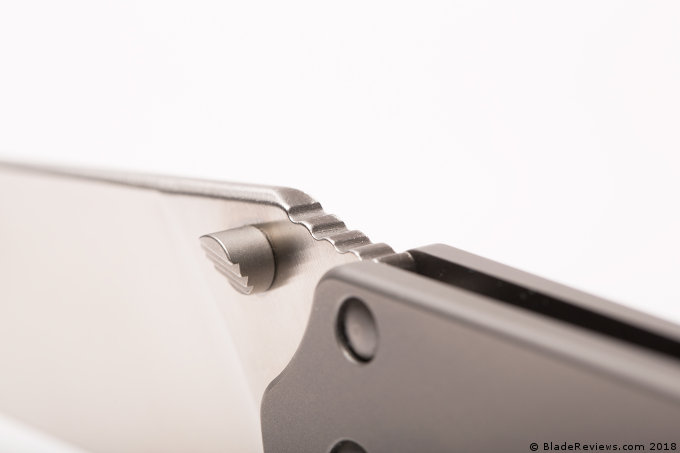
On opening the tang meets a solid, titanium frame-lock. On the review samples provided, both were play free in any direction and easily disengaged. In order to protect the spring integrity Maxpedition has added a small tab on the inner surface to prevent over-travel when unlocking. While there are several variations of this type of mechanism, Maxpedition is in the process of patenting theirs, asserting differences in the implementation.
Unlike the blade without any markings, the locking leaf has “Maxpedition” laser etched on the surface. The branding here is a little too bold for my taste and I feel the logo could definitely be dialed back a bit to uphold the sober aesthetic.
Maxpedition Excelsa Review – Final Thoughts
Over all the Excelsa is an interesting design. While I understand and very much appreciate minimal design, this may border on sterile for some. It could have been nice to add a little something to make it more personable. Something that wasn’t a large Maxpedition logo. Maybe some added texture or subtle anodized details? Possibly a greater departure from the Ferox design could have expanded the design vocabulary of the line-up? Outside of design taste my only real issue with this knife is the lack of marking for the steel type.
Criticisms aside Maxpedition has done an excellent job with the utility as well as the pricing. You would be hard pressed to find another folder that can boast the features, materials, fit and finish at this price point.
- Durable and Sleek Framelock Folding Knife with D2 Tool Steel Blade & Titanium Handle
- D2 tool steel with cryo heat treatment to 58-60HRc
- Full height flat grind for optimal edge geometry
- 6Al4V Titanium alloy handle and locking slab
- Unique concealed lock over travel limiter mechanism with Stainless steel ramped thumb stud
Editor: I recommend purchasing the Maxpedition Excelsa at Amazon or BladeHQ. Thanks for reading.
Additional Specifications:
Small Version
Overall Length: 6.7″
Weight: 2.7 oz
Blade:
Length: 2.9″
Thickness: 0.11″
Steel : D2
Hardness : 58-60 HRC
Handle:
Slab and lock thickness: 0.12″
Length: 3.9″
Large Version
Overall Length: 8.3″
Weight: 5.1 oz
Blade:
Length: 3.6″
Thickness: 0.14″
Steel : D2
Hardness : 58-60 HRC
Handle:
Slab and lock thickness: 0.15″
Length: 4.7″
Made In Taiwan
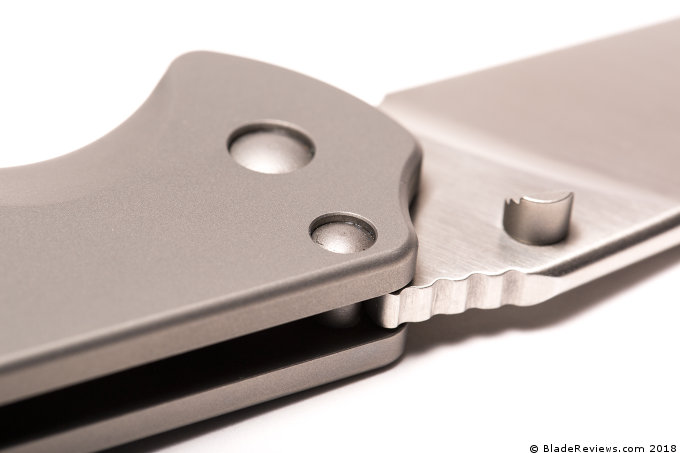
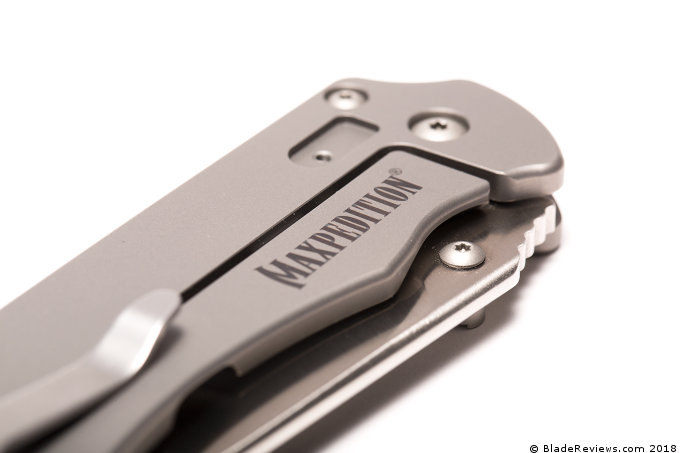

my Kershaw junk yard dog 2 has done the job well for about 12 years…but this might be my next knife. No weird fantasy knife,”tactical ” nonsense…just a straight forward knife that looks like it would be a good choice for EDC and would probably be there in the long run.
Patrick, Thanks for checking out the review. I agree, Maxpedition has a real simple design here. Could be a great choice for a practical utility knife.
Dan
Mr. Looney’s comment is spot on.
I require that my edc knife be at least 3.5 inches such as the Spyderco Endura or Police model or the discontinued Kershaw 1840. When I have been out of the country, I have wanted something even more substantial such as the Buck 110 even though it does deploy very quickly. The larger knife seems to fit that bill.